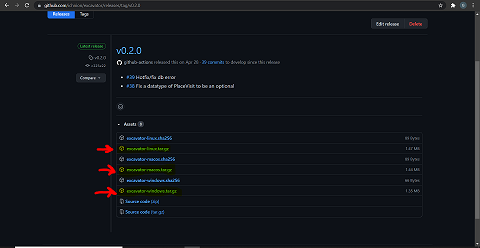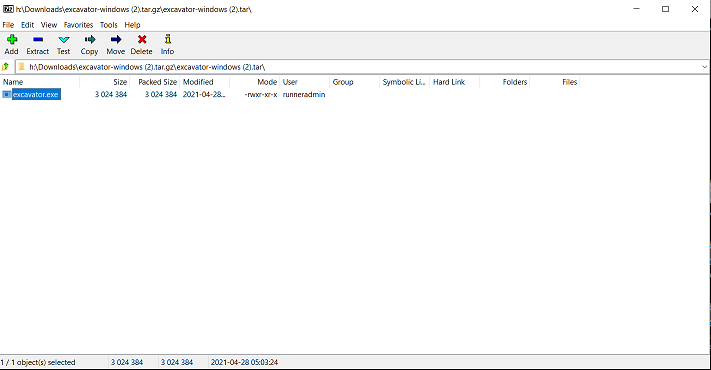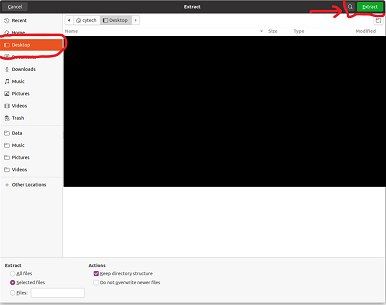Installation
important
There are different methods to install Excavator, and it depends on your profile to select how you are going to install it. If you are not a developer, please refer to the "Non-Developer Guide". Otherwise, please follow the instructions from the "Developer guide".
Non-Developer Guide#
Go to our GitHub page.

As you can see on the screenshot, there are different files in the "Assets" part of the current release (v0.2.0 when we are writing this).
The three files with the .tar.gz extension are the ones we are looking for. The next step will depend on which OS you are using.
Windows#
Click on excavator-windows.tar.gz. Once it is downloaded, you need to unzip the file. For this tutorial, we are using 7Zip.

Put this file in C:\Windows\System32, and the installation is completed. You should now be able to use Excavator in a terminal.
Linux#
Click on excavator-linux.tar.gz. Once it is downloaded, extract it wherever you want. In our case, we extract it in Desktop.

Finally, open a terminal and type the following command sudo cp PATH_TO_EXCAVATOR /usr/local/bin (replace PATH_TO_EXCAVATOR by the path to where you extracted excavator in the previous step).
The installation is completed, you should now be able to use Excavator in a terminal.
MacOS#
Click on excavator-linux.tar.gz. Once it is downloaded, extract it in usr/local/bin.
The installation is completed, you should now be able to use Excavator in a terminal.
Developer Guide#
The easiest way to install Excavator is using a package registry like crates.io:
In case you are using MacOS you can also install the package from Homebrew:
Compiling from source#
You need to have a package manager called cargo in your local.
If you already have got rustc installed in your local, you also have cargo installed locally.
And then you can install with this command.
MacOS#
Open the terminal from the applications folder or press command + spacebar to access spotlight and type “terminal”. Paste the following into the command line:
This command downloads a script and starts the installation of the rustup tool, which installs the latest stable version of Rust, the programming language which excavator is based on.
When asked about current installation options press “1” to choose "Proceed with installation (default)"
Rust is installed now. Great!
To continue you need Rusts's package manager called Cargo and put the bin directory ($HOME/.cargo/bin) in your PATH environment variable. To do that, paste the following line:
next, paste the following:
This might take a couple of minutes.
Now that you’re setup, let’s take a look at how to get your data from a web service !